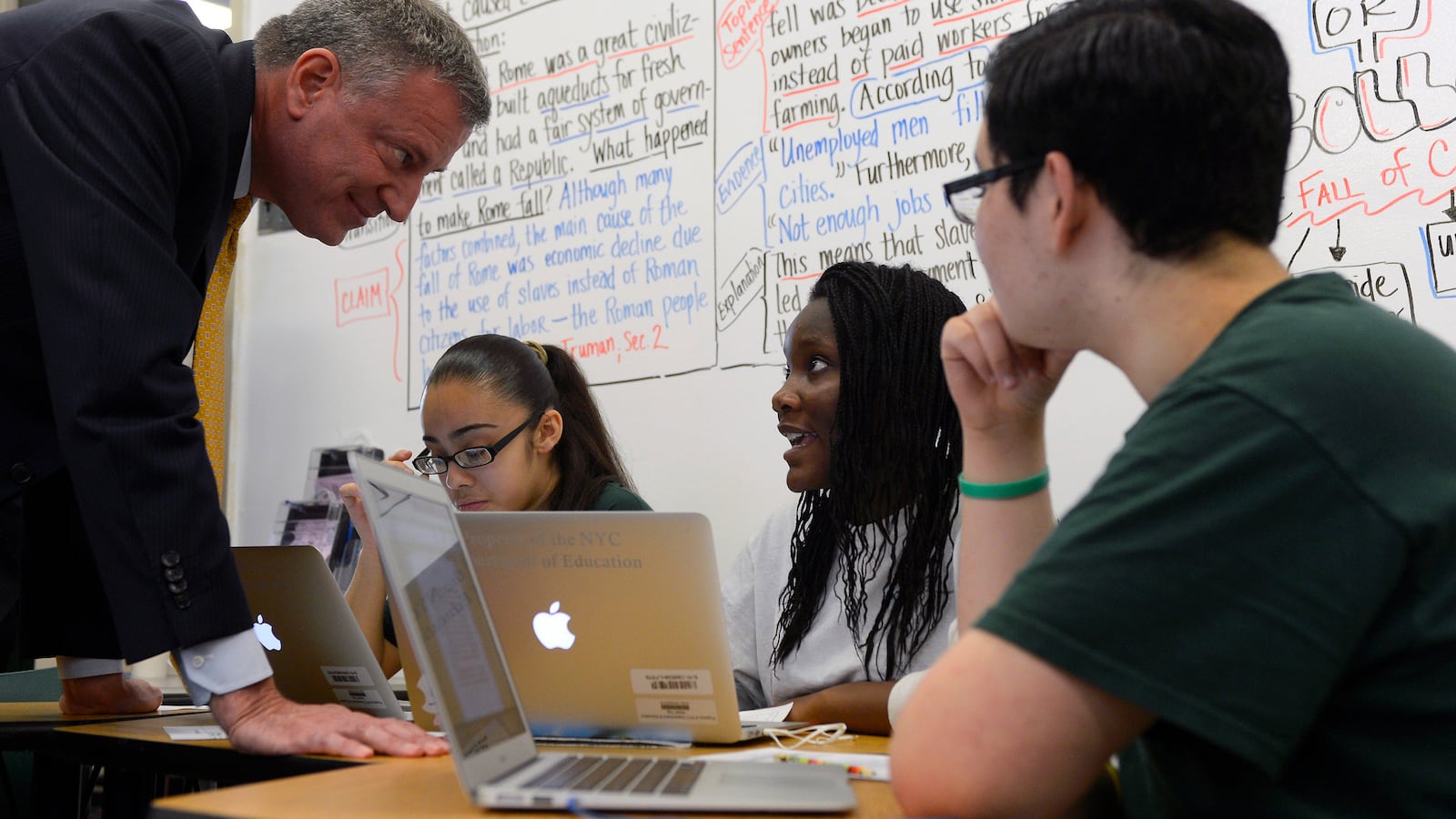New York City’s plan to provide a computer science education to its 1.1 million students will kick off next year in at least 50 schools, which will offer an Advanced Placement-level class or a software engineering program for the first time.
Starting this month, schools can apply to offer the “The Beauty and Joy of Computing,” a one-year course for high schoolers, or a multi-year software engineering program. The programs, which already exist in a few anozen schools across the city, represent the first steps in a larger plan that officials say they will be working on for at least a year.
“This is the first step to build on what we’ve already done,” Debbie Marcus, the education department’s executive director of computer science, said this week.
Mayor Bill de Blasio announced his plan to provide computer science in every school by 2025 in an agenda-setting speech last September. To get there, the city will have to find ways to train hundreds of teachers at all grade levels, help schools develop and choose programs and teaching materials, and overcome barriers to securing Internet access and computers.
The city’s first steps will target schools with leaders who say they’re already prepared to meet those challenges.
Applications for both programs ask schools to explain the technology classes they already offer and the experience levels of the prospective instructors. Schools offering the AP program will be expected to do targeted outreach to girls and other underrepresented student groups, the application indicates.
Marcus said the city also wants to make sure the programs reach a broad spectrum of students, and that all schools — from the most struggling to its sought-after specialized schools — will be considered.
As for the two programs the city is focusing on, each represents a different approach to computer science education.
“The Beauty and Joy of Computing” is a one-year course designed to teach the principles in computer science in high schools. Though it’s an advanced course originally created for college freshmen, the curriculum is designed to be accessible to a broad range of students, said Dan Garcia, a teaching professor at UC Berkeley who co-designed the class. Students who take the course should be prepared for a new AP exam being rolled out in 2017.
If the traditional Advanced Placement Computer Science curriculum is like calculus, Garcia said, then “Beauty and Joy” could be compared to pre-calculus.
The city’s Software Engineering Program is more than just one class. It’s a structured sequence of electives for middle and high school students designed to provide a background in programming, robotics, web design, physical computing, and mobile computing. The program launched in 2013 under former Mayor Michael Bloomberg and is now in 18 schools.
Of course, to reach over 1,800 schools, the city will need to do more than expand these existing programs, and find ways to reach younger children Officials said that these are not the only programs that they will unveil next year and that more information will be released this spring. In the meantime, they are working on a “foundational document” that outlines the city’s plans for expanding the program throughout the city.
Marcus said the document could take up to a year and a half to complete, as the city looks at model programs from across the country and consults expert teachers, researchers, and programmers.
“One of the reasons it’s a 10-year initiative is it’s not going to happen overnight,” she said. “Not all programs require this level of commitment on the part of teachers and schools. Software engineering is really in-depth — we’re also looking at lower levels of commitment for teachers to understand a specific concept or tool.”
Marcus said the city plans to focus on training teachers in a variety of subjects to teach computer science, instead of recruiting new teachers who specialized in the subject.
That raises a red flag for Maurya Couvares, the co-founder and executive director of ScriptEd, which helps teenagers land technology internships. She said that it will be difficult for classroom teachers to learn the skills necessary to teach a full computer science course without significant professional development.
“I’m interested to see how they will do this,” Couvares said. “Hopefully that they won’t deliver a watered-down version to students.”
Garcia, for one, said his course’s training is anything but. The “Beauty and Joy” training includes two weeks of in-person work and a two-to-four-week online course during the summer.
“This is not at all a lightweight, one-week situation,” Garcia said. “This is a very powerful, deep course.”

